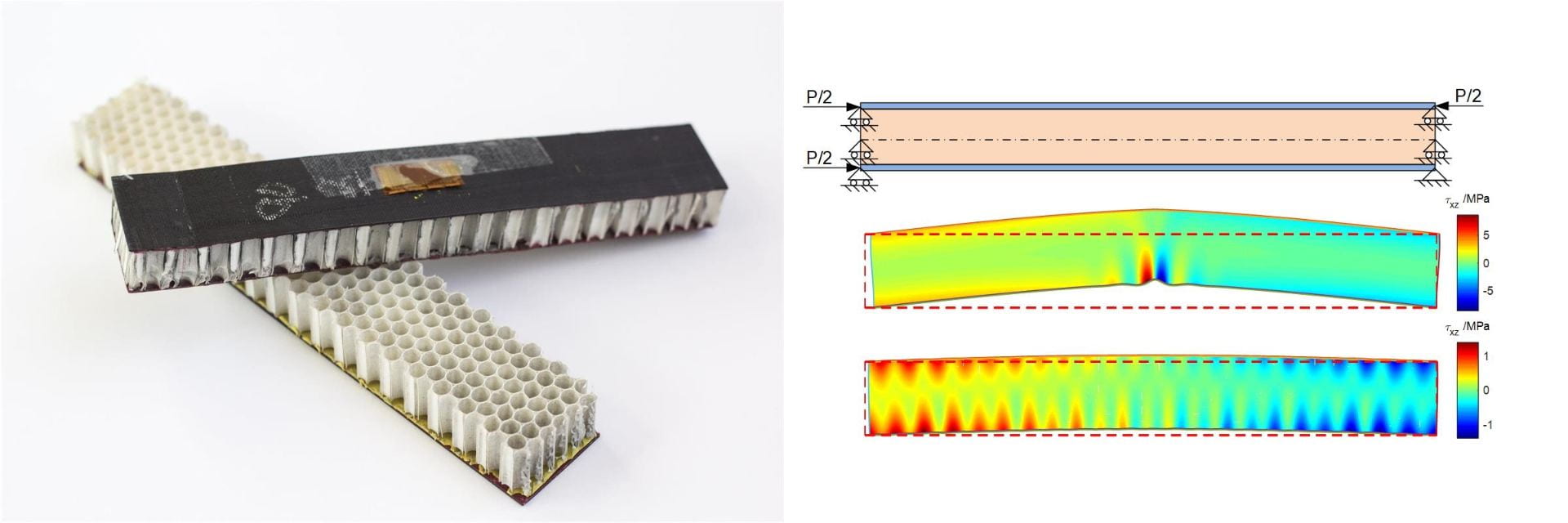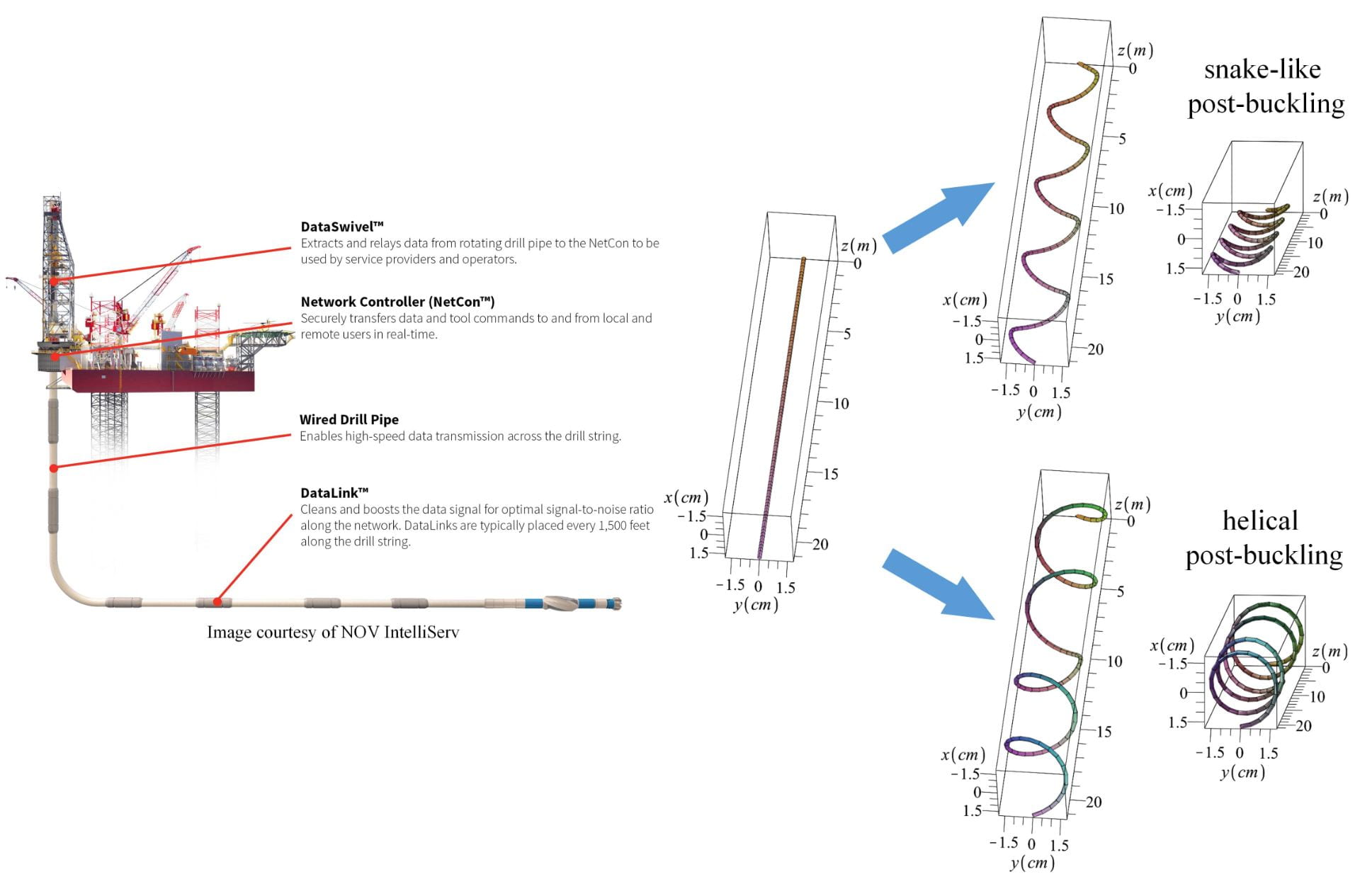Composites structures and materials
Advanced composite structures are widely used in aerospace vehicles, naval vessels, ground transportation, and civil infrastructure for their beneficial properties of high stiffness and strength while being lightweight. Among them, sandwich composite structures are specially designed by attaching two thin stiff face sheets to a thick low-density core material in order to achieve a higher strength-to-weight ratio. Due to the high divergence in both material properties and geometry between faces and the core, classical theories are only applicable to particular types of sandwich composites. The goal of this research is to 1) derive theoretical models that can well capture the mechanical behavior, but are still simple enough to be applied in design and analysis. 2) apply the developed theories to establish a fundamental understanding of lightweight composite structures and guide the design of novel structures.
Novel computational method
“Along with the ever-growing advancement of faster computing machines, the research into the development of new methods for numerical solution of problems in engineering and physical sciences also is an ongoing parallel activity. Such research interests, of course, remain motivated by needs of modern technology” (Bert and Malik, 1996, ASME Appl. Mech. Rev., 49). As desired by complex behaviors and novel materials, highly accurate and efficient numerical tools are always in demand. We are interested in exploring and developing novel computational methods to numerically simulate complex behaviors. Our goal is to 1) develop reliable, stable, and more efficient numerical tools with applications to structural analysis; 2) use these tools to investigate and understand complex behaviors that cannot be achieved by existing methods.
Static and dynamic response simulations using one co-rotational weak-form quadrature element
Nonlinear behavior and stability of thin structures
Buckling is traditionally regarded as another important failure more other than fracture, however, it is possible that slender structures and soft materials can experience large deformation, while strains and stresses are far lower than the limit. Structures can have the functionality instead of failure during the post-buckling. We are interesting in understanding the stability and instability of thin structures, gaining deeper insight into their nonlinear behavior, and designing novel structures with tunable properties by leveraging their nonlinear behaviors.

